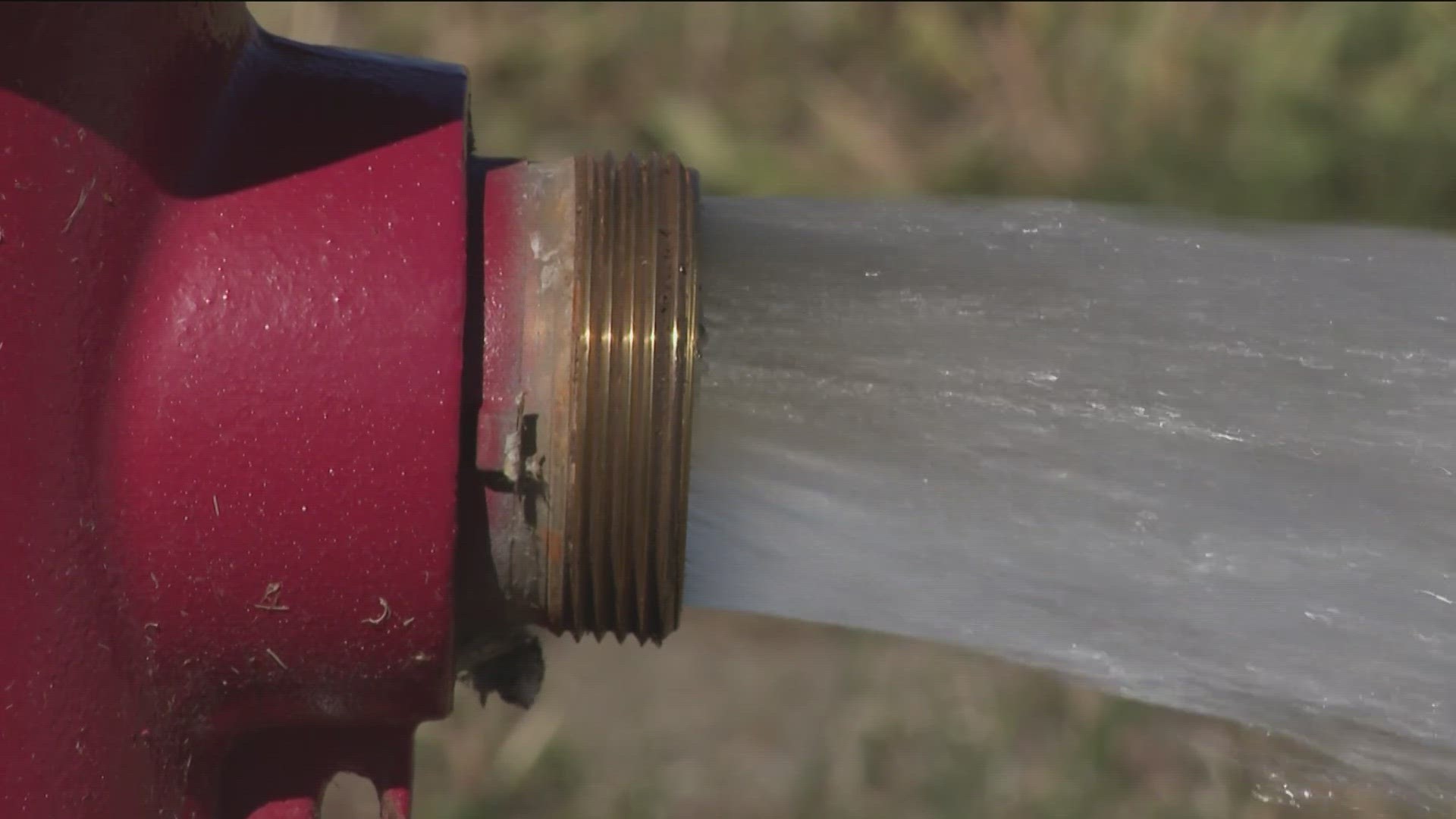AUSTIN, Texas — Despite recent rain, Central Texas remains in a drought, impacting water supplies.
Some cities and utilities know having just one source of drinking water isn't an ideal plan, especially with the ongoing drought and the nonstop flow of people moving to the Lone Star State.
The KVUE Defenders have been looking into how Central Texas communities are addressing water issues to make sure there is enough of our most precious resource for years to come.
KVUE first told you about Austin Water looking into Aquifer Storage and Recovery (ASR) systems last year.
Phase 1 of the ASR project has identified two aquifers that could be the site of a pilot program: the Trinity and Carrizo-Wilcox aquifers, located in Travis, Bastrop and Lee counties. Austin Water also studied the Edwards Aquifer.
The utility company hopes to zero in on one location by the end of the year and start a pilot program soon after.
Aquifers are underground layers of rock that are saturated with water. Austin Water’s idea is to store extra water in these aquifers until the water is needed. Storing water underground helps prevent evaporation which is a big contributor to water loss.
ASR is a strategy that is part of the City of Austin's 100-yearwater plan, called "Water Forward," which aims to help meet water needs during times of extreme drought in the future.
One of the issues Austin Water is looking into is how adding and drawing out water from the aquifer will affect nearby wells.
"We do understand from other ASR projects that overall water levels for adjacent wells typically increase when water is being added to the ASR and decrease when water is being withdrawn," said Marisa Flores-Gonzalez, the Water Resources Team supervisor for Austin Water. "Austin's ASR project will not withdraw or recover more water than is being put into the aquifer."
Flores-Gonzalez said the goal is to have the ASR project online by 2040.
Austin Water plans to hold open houses in February 2024 to further discuss phase one and to take more community input. According to the utility company's website, it has held dozens of stakeholder, community group and elected official meetings.
From those meetings, Austin Water came up with three mitigation plans that "perform well lowering/mitigation for existing well owners impacted by potential aquifer fluctuations due to ASR, fund additional monitoring and research of the aquifer and groundwater in the region through partnerships and use of ASR wellfield land for continued purposes compatible with ASR."
According to the utility company, other cities already using ASRs include San Antonio, El Paso and Kerrville.
Austin Water likened the ASR project to a savings account, depositing water into the ASR during wet years and drawing on the water from storage when it's needed.
"When regular water supplies become low during a drought or during other emergencies, the stored water is pumped out of the aquifer, tested and treated to meet Austin's drinking water standards and then is provided back to Austin Water customers," Austin Water's website states.

